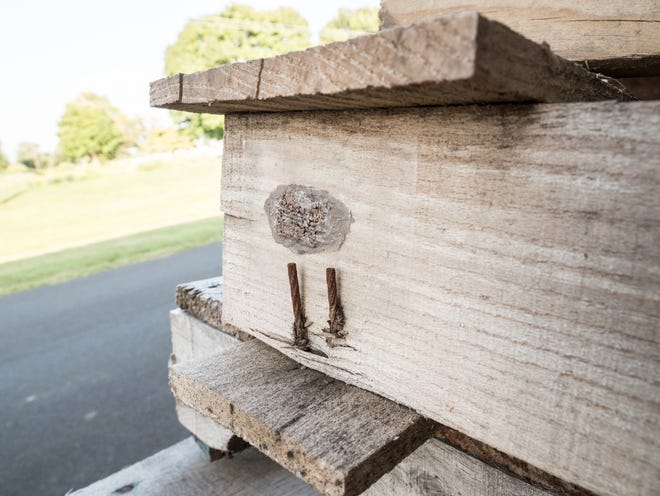Invasive spotted lanternflies have hitchhiked to Sussex County, and they’re not on summer vacation.
Established populations of the destructive insect have been found in Georgetown, Milford, Seaford, Ocean View and Rehoboth, according to the Delaware Department of Agriculture.
Sussex is under quarantine effective immediately, making the whole state a spotted lanternfly quarantine zone. The red, black, white and gray bug first showed up in New Castle County in 2017. The northernmost county was quarantined in 2019 and Kent County in 2020.
Quarantine in this case means “any person conducting business for a commercial company, a municipality, or a government agency that requires movement of any regulated item within or from the quarantine area must have a permit,” the statement said. Permits are obtained by training and passing an online test.
Homeowners are encouraged to do their part by educating themselves about the species and taking steps to eradicate them from their property, as well as using a checklist to confirm the bug is not present on or in your vehicle before moving it. (See below for details.)
INVASIVES:Gardeners beware: Watch out for these 5 invasive plants in Delaware this spring
What are spotted lanternflies and why are they so bad?
Spotted lanternflies are a species of planthoppers native to China, first detected in America in Pennsylvania in September 2014, according to the U.S. Department of Agriculture. Now, they’re found in 11 states, including Connecticut, Indiana, Massachusetts, New Jersey, New York, Ohio, West Virginia, Virginia, Maryland and Delaware.
“If allowed to spread in the United States, this pest could seriously impact the country’s grape, orchard, and logging industries,” the department said.

Adult spotted lanternflies are about 1 inch long and a half-inch wide at rest. They have black heads and legs, yellow abdomens with black bands and two sets of wings − gray with black spots on top and red with black spots underneath. They look very different as juveniles, though. The youngest are small, round and black with white spots, and they develop red areas as they grow.
Eggs are laid in late fall on host trees and nearby smooth surfaces like stone, outdoor furniture, vehicles, walls, etc. When freshly laid, they have a gray, mud-like covering, while uncovered eggs appear segmented.
INSECTS:Butterfly not seen in 27 years found in southern Delaware
The species feeds on a wide range of trees, from walnuts to willows, but another invasive, tree-of-heaven, appears to be its preferred host. Egg masses are laid on the trunks and branches of many medium-to-large-sized trees, often near the top. The eggs hatch in the spring and the nymphs then leave the tree in search of food.
Trees with “weeping wounds” are a tell-tale sign of spotted lanternflies, according to the Delaware Department of Agriculture. The insect pierces the tree trunk to feed and excrete sugar water on and around the feeding site, sometimes leaving a gray or black trail. It may also attract wasps, ants or other insects.
In heavily infested trees, branches and eventually the entire tree will wilt and die.

What can residents do?
Killing spotted lanternflies of all life stages is the best thing Delawareans can do to stop their spread. Squash them between May and November and destroy their egg masses the rest of the year.
The Department of Agriculture recommends keeping the Delaware Resident Spotted Lanternfly Compliance Checklist in your vehicle and checking it each time you travel.

Eliminating tree-of-heaven, often found in industrial parks, unmanaged or vacant areas and along highways and railways, can also help reduce the population. In addition, between now and early September is the best time to apply insecticide to susceptible trees.
The Department of Agriculture is asking people to report spotted lanternfly sightings near Dover Air Force Base or in Sussex County so they can determine how the insects are moving and which transportation pathways are being utilized.
MORE:Coral Lakes, a Sussex housing development once denied, approved on appeal. Here’s why